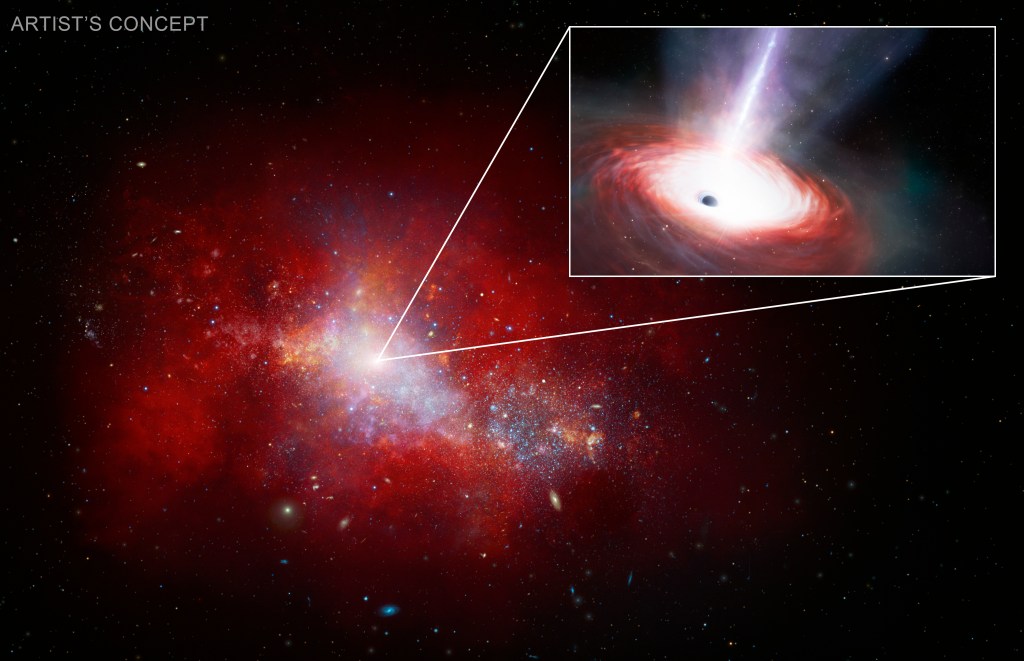
A new discovery has unveiled a rapidly feeding black hole at the heart of a dwarf galaxy just 1.5 billion years after the Big Bang. This black hole, dubbed LID-568, is devouring matter at an astonishing rate — more than 40 times the theoretical limit, providing valuable new insights into the growth of supermassive black holes in the early universe.
Using data from NASA’s James Webb Space Telescope (JWST) and Chandra X-ray Observatory, astronomers identified LID-568 hidden in the Chandra X-ray Observatory’s COSMOS legacy survey. This survey, which includes over 4.6 million seconds of data, revealed a population of galaxies bright in X-ray light but invisible in optical and near-infrared wavelengths. By following up with JWST’s powerful infrared sensitivity, the team successfully detected faint emissions associated with LID-568, confirming its existence.
Supermassive black holes, which reside at the centers of most galaxies, have long puzzled scientists due to their rapid growth early in the universe’s history. How these objects grew so large in such a short amount of time is still not fully understood. The discovery of LID-568, with its extreme rate of feeding, could provide the missing piece of the puzzle.
LID-568’s feeding rate exceeds the Eddington limit — the theoretical maximum rate at which a black hole can accrete material before the outward pressure from radiation balances its inward gravitational pull. In the case of LID-568, this limit is surpassed by over 40 times, a phenomenon previously considered rare. The intense accretion suggests that a substantial portion of the black hole’s mass may have been added in a single burst of rapid feeding.
These results offer new insights into the formation of supermassive black holes from smaller “seeds,” which are believed to have originated from the death of the first stars (light seeds) or the direct collapse of gas clouds (heavy seeds). While previous theories have proposed these mechanisms, observational evidence has been scarce until now. The findings from LID-568 suggest that a significant portion of a black hole’s growth could occur during a single episode of intense accretion, regardless of whether the black hole began as a light or heavy seed.
Lead researcher Hyewon Suh, an astronomer at the International Gemini Observatory/NSF NOIRLab, explained, “A significant portion of mass growth can occur during a single episode of rapid feeding, regardless of the origin of the black hole’s seed.”
These groundbreaking observations provide crucial data for understanding the early universe’s black holes and could help resolve long-standing mysteries about how supermassive black holes came to exist so early in cosmic history.
A detailed study of the discovery is published in Nature Astronomy under the title A super-Eddington-accreting black hole ~1.5 Gyr after the Big Bang observed with JWST.

